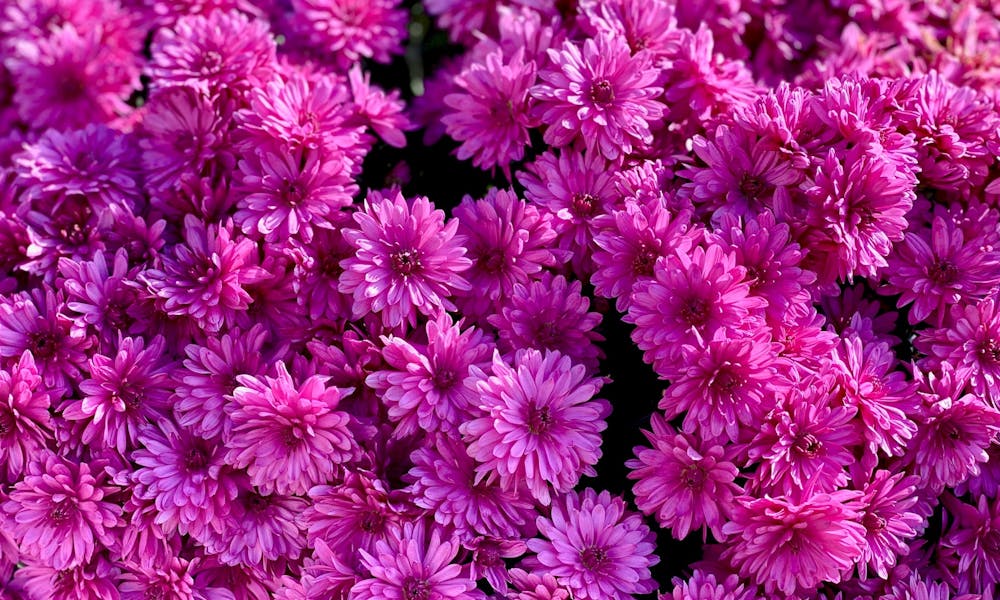Fuchsia is a captivating flower known for its vibrant colors and graceful appearance. With its delicate petals and enchanting hues, fuchsia has captivated the hearts of flower enthusiasts and gardeners alike. In this comprehensive guide, we will explore the world of fuchsia, from its origins and varieties to cultivation tips and care instructions. Join us on this journey as we unravel the secrets of this remarkable floral wonder.
Fuchsia: A Mesmerizing Blossom
Fuchsia, scientifically known as Fuchsia magellanica, is a genus of flowering plants that belong to the family Onagraceae. Originating from Central and South America, fuchsia is renowned for its pendulous flowers that come in a kaleidoscope of colors, including vibrant pinks, purples, and reds. These striking blossoms often feature contrasting hues, making them a feast for the eyes.
The Fascinating History of Fuchsia
The history of fuchsia traces back to the 17th century when the plant was discovered in the Caribbean by the renowned French botanist Charles Plumier. He named the plant after the renowned German botanist Leonhart Fuchs, paying homage to his significant contributions to the field of botany. Since its discovery, fuchsia has gained popularity across the globe and has become a beloved addition to gardens, parks, and floral displays.
A Plethora of Fuchsia Varieties
Fuchsia comes in a wide array of varieties, each possessing its own unique characteristics and charm. Let’s explore some of the most popular fuchsia cultivars:
1. Fuchsia ‘Swingtime’
The Fuchsia ‘Swingtime’ variety boasts a stunning combination of red and white flowers. Its elegant, bell-shaped blooms hang gracefully from the plant, creating a striking visual display. ‘Swingtime’ is a vigorous grower and is often used as a focal point in gardens and hanging baskets.
2. Fuchsia ‘Dollar Princess’
Featuring rich, velvety red petals, the Fuchsia ‘Dollar Princess’ variety adds a touch of opulence to any garden setting. This cultivar is highly sought after for its deep-colored blooms and its ability to attract hummingbirds, making it a delightful addition to bird-friendly gardens.
3. Fuchsia ‘Golden Gate’
With its unique yellow and green variegated foliage, the Fuchsia ‘Golden Gate’ variety adds a splash of color even before its flowers bloom. Once in full bloom, its exquisite pink and purple flowers create a striking contrast against the vibrant leaves. ‘Golden Gate’ is perfect for adding a touch of whimsy to your garden or patio.
4. Fuchsia ‘Marinka’
The Fuchsia ‘Marinka’ variety is renowned for its profusion of double flowers. With its layers of ruffled petals in shades of pink and purple, this cultivar is a true showstopper. ‘Marinka’ thrives in containers and hanging baskets, allowing you to showcase its abundant beauty in any space.
Fuchsia Cultivation: Tips and Tricks
Growing fuchsias can be a rewarding experience, but it requires proper care and attention. Here are some valuable tips and tricks to help you cultivate vibrant and healthy fuchsia plants:
- Location Matters: Fuchsias thrive in partial shade, protected from direct sunlight during the hottest parts of the day. Choose a location that receives morning sun and afternoon shade for optimal growth.
- Well-Draining Soil: Fuchsias prefer moist but well-draining soil. Amend heavy clay soils with organic matter to improve drainage and prevent waterlogged roots.
- Watering: Keep the soil consistently moist but not waterlogged. Avoid overwatering, as it can lead to root rot. Regularly check the soil moisture and adjust your watering schedule accordingly.
- Fertilization: Feed your fuchsia plants with a balanced, water-soluble fertilizer every two weeks during the growing season. This will provide the necessary nutrients for healthy growth and abundant blooms.
- Pruning: Regularly prune your fuchsia plants to maintain their shape and encourage bushier growth. Remove any dead or diseased branches to prevent the spread of pests and diseases.
- Pest and Disease Control: Fuchsias are susceptible to aphids, whiteflies, and mites. Monitor your plants regularly and take appropriate measures at the first sign of infestation. Neem oil or insecticidal soap can help control pests effectively.
Frequently Asked Questions (FAQs)
Q: Can fuchsias tolerate cold temperatures?
Yes, some fuchsia varieties are more cold-tolerant than others. Hardy fuchsias, such as Fuchsia magellanica, can withstand temperatures as low as -10°C (14°F) with proper protection.
Q: How often should I water my fuchsia plants?
Watering frequency depends on various factors such as temperature, humidity, and soil type. As a general guideline, water your fuchsia plants when the top inch of soil feels dry to the touch.
Q: Can I grow fuchsias indoors?
Yes, fuchsias can be grown indoors as long as they receive sufficient light. Place them near a south-facing window or provide supplemental grow lights to ensure they get the necessary sunlight.
Q: Do fuchsias attract pollinators?
Yes, fuchsia flowers are known to attract pollinators such as hummingbirds and butterflies. Their vibrant colors and nectar-rich blooms make them irresistible to these winged visitors.
Q: How long do fuchsia flowers last?
The lifespan of fuchsia flowers varies depending on the variety and growing conditions. On average, fuchsia flowers can last anywhere from a few days to several weeks.
Q: Can I propagate fuchsias from cuttings?
Yes, fuchsias can be easily propagated from stem cuttings. Select a healthy stem, remove the lower leaves, and place the cutting in a well-draining rooting medium. Keep it moist until roots develop.
Conclusion
In conclusion, fuchsia is a captivating flower that enchants with its vibrant colors and delicate beauty. Whether you’re a seasoned gardener or a flower enthusiast, growing fuchsias can add a touch of elegance and charm to your outdoor spaces. By following the cultivation tips and tricks outlined in this guide, you’ll be well-equipped to nurture healthy fuchsia plants and enjoy their stunning blossoms. Embrace the allure of fuchsia and witness the magic unfold in your own garden.
